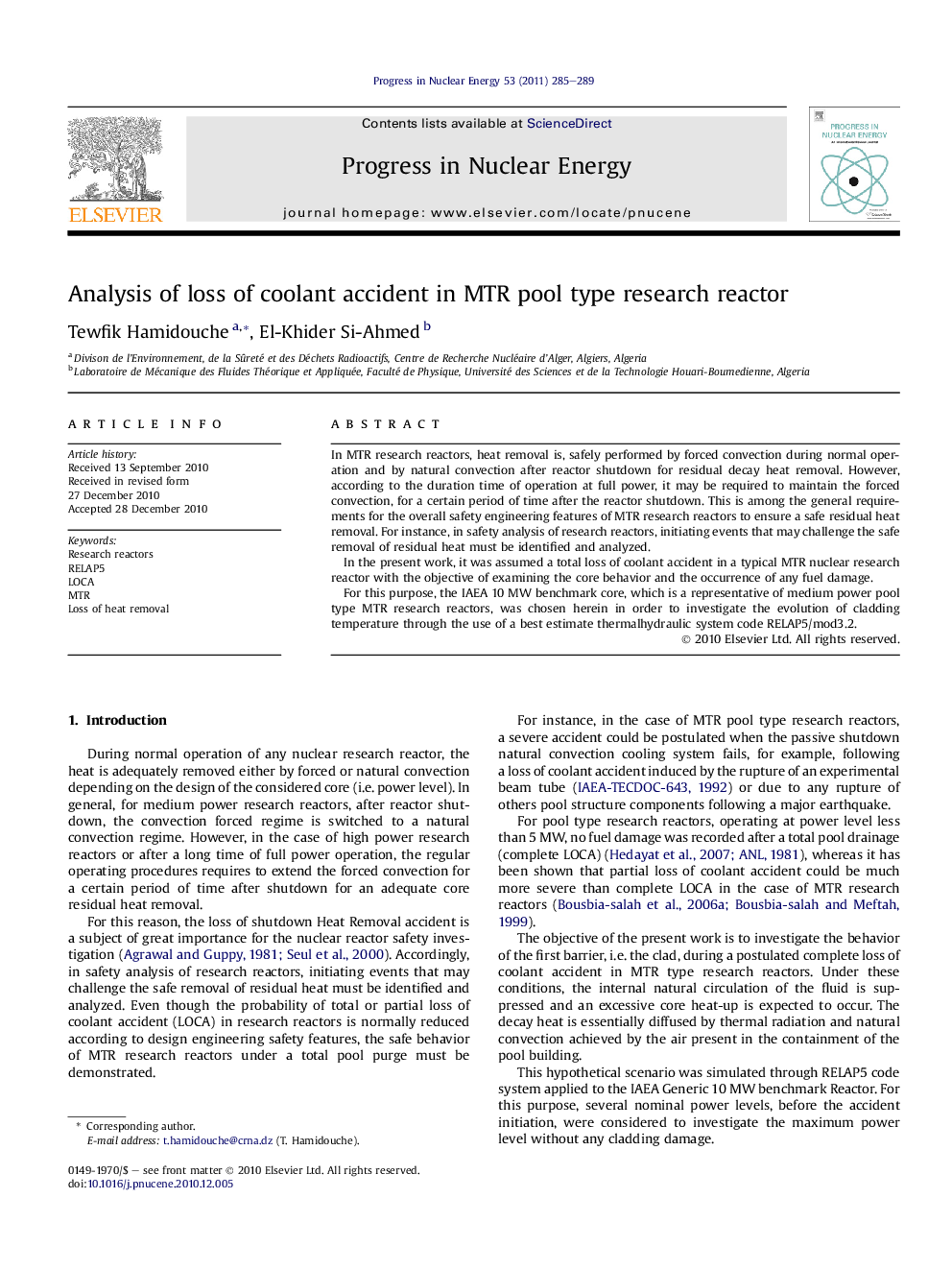| Article ID | Journal | Published Year | Pages | File Type |
|---|---|---|---|---|
| 1741312 | Progress in Nuclear Energy | 2011 | 5 Pages |
In MTR research reactors, heat removal is, safely performed by forced convection during normal operation and by natural convection after reactor shutdown for residual decay heat removal. However, according to the duration time of operation at full power, it may be required to maintain the forced convection, for a certain period of time after the reactor shutdown. This is among the general requirements for the overall safety engineering features of MTR research reactors to ensure a safe residual heat removal. For instance, in safety analysis of research reactors, initiating events that may challenge the safe removal of residual heat must be identified and analyzed.In the present work, it was assumed a total loss of coolant accident in a typical MTR nuclear research reactor with the objective of examining the core behavior and the occurrence of any fuel damage.For this purpose, the IAEA 10 MW benchmark core, which is a representative of medium power pool type MTR research reactors, was chosen herein in order to investigate the evolution of cladding temperature through the use of a best estimate thermalhydraulic system code RELAP5/mod3.2.
